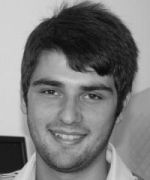
Bioengineering Department
Politecnico di Milano
| |
| home |
| 2008 |
| 2009 |
| 2010 |
| 2011 |
February, Thursday 12th Lecturer: Katia Pasera Title: PET Summary: click here to download the presentation. |
 |
|---|---|
March, Thursday 12th Lecturer: Federico Aletti Title: Models for the identification of arterial blood pressure variability sources and components. Summary:Arterial blood pressure (ABP) beat-by-beat variability is either due to cardiac output (CO) or total peripheral resistance (TPR) fluctuations. Disentangling their effects on ABP oscillations could enable to extract information related to vascular autoregulation and its contribution to ABP regulation. Two models for the prediction of beat-by-beat ABP variability will be presented: a black box approach for the estimation of ABP fluctuations from CO variability and a Windkessel-based description of the interplay between ABP, CO and TPR oscillations, which separates ABP variability into its CO driven and TPR driven components and provides with a technique for the estimation of TPR beat-by-beat fluctuations as well. The application and validation of the methods to an alpha-blockade protocol and to a heart failure protocol, both characterized by invasive hemodynamic measurements on conscious dogs, will be discussed. No summary of the results and conclusion is reported here: show up next Thursday and let's have a nice discussion together! click here to download the presentation. |
 |
March, Thursday 26th Lecturer: Federico Esposti Title: Analysis of the /long-term memory /characteristics of neuronal activity. Mathematics and Evolution at work Summary: In the last ten years great efforts have been spent in studying the collective behaviors of neuronal populations. As a matter of fact, a mass of recent findings demonstrated that the study of neuronal networks as unique entities adds a lot a new information in respect to traditional single cell recordings. For this reason, the study of collective neuronal behaviors is becoming the new standard of modern neurophysiology. Many of these works reported the presence of statistical long-term correlations (called /long-term memory/) in neuronal signals both from the temporal and the spatial point of view. At the same time, from the recent-years exciting development of the mathematical and physical description of complex systems (in particular, the introduction of the theory of /emerging properties/ and the description of /excitable media/ activity), many technique In this talk, I’ll present an original interpretation (together with the relative experimental verifications) for the origin of such behaviors in the central nervous system and, consequently, in many other physiological structures, such as the cardiovascular system. The origin of /long-term memory/ in CNS is a very complex matter since it is an emerging property of a biological system therefore it requires to be considered both from the physical, biological and evolutionary point of view. click here to download the presentation. |
 |
November, Thursday 27th Lecturer: Ioanna Chouvarda, Laboratory of Medical Informatics, Aristotle University, Thessaloniki, Greece Title: With Brain and Heart: approaches on atrial fibrillation and sleep-related analysis Summary: The current presentation aims at elaborating on different aspects of current biomedical modelling and processing approaches, with respect to questions and answers that can be given at a certain analysis scale, from basic methods examining propagation at cellular level to overall characterization of organ function under disease or medication. |
|
December, Thursday 17th Lecturer:Riccardo Barbieri, Assistant Professor of Anaesthesia, Harvard Medical Schoo,l Dept of Anesthesia and Critical Care, Massachusetts General Hospital, Boston, MA, USA, Research Affiliate, Dept of Brain and Cognitive Sciences, Massachusetts Institute of Technology, Cambridge, MA, USA Title: Point Process Bayesian Models: Instantaneous Measures of Cardiovascular control and Heart Beat Dynamics Summary: Lo studio della variabilita’ cardiaca ha offerto, negli ultimi decenni, importanti risultati nella valutazione dell’influenza del sistema nervoso autonomo sul battito cardiaco e, piu’ in generale, sul controllo cardiovascolare. A riguardo, il nostro gruppo ha recentemente sviluppato nuovi algoritmi probabilistici per modelli di dinamiche del battito cardiaco usando la teoria dei processi puntuali. La nuova formulazione permette di fornire una precisa rappresentazione della struttura stocastica che genera il battito, di stimare parametri tempo-varianti per misure istantanee relative alla variabilita’ cardiaca e al controllo cardiovascolare, e di avvalersi dei metodi di misura della bonta’ di stima associati alla teoria dei processi puntuali per la ricerca dei modelli ottimali. La prima parte della presentazione e’ dedicata all’esposizione della formulazione matematica, inclusi gli ultimi sviluppi del modello (Aritmia Sinusale Respiratoria, Controllo Baroriflesso, Dinamiche Nonlineari). Di seguito, a dimostrare validita’ e implicazioni del metodo, verranno presentate alcune applicazioni degli algoritmi su diversi protocolli sperimentali. |
|